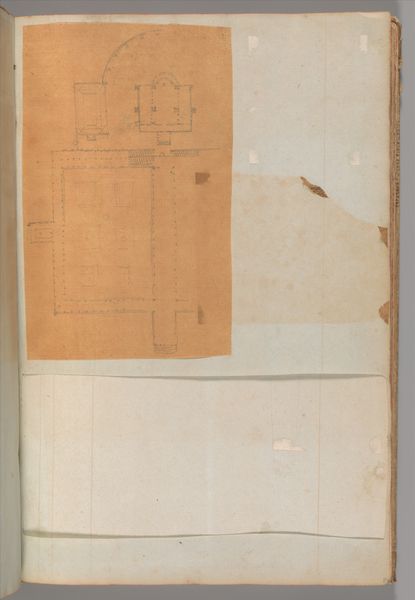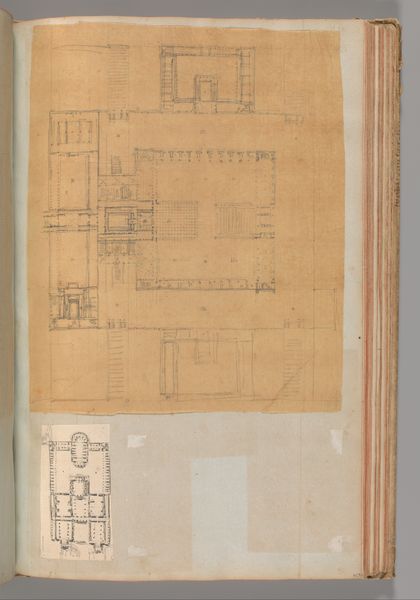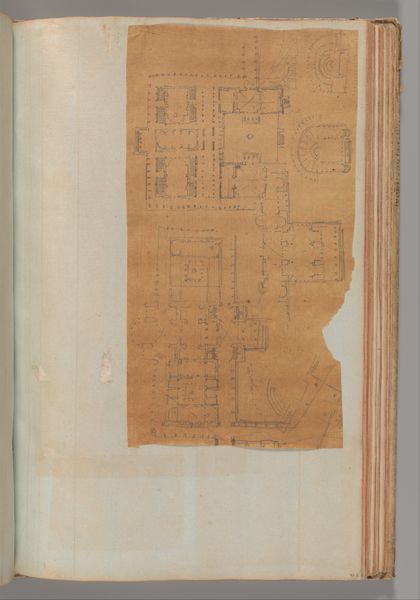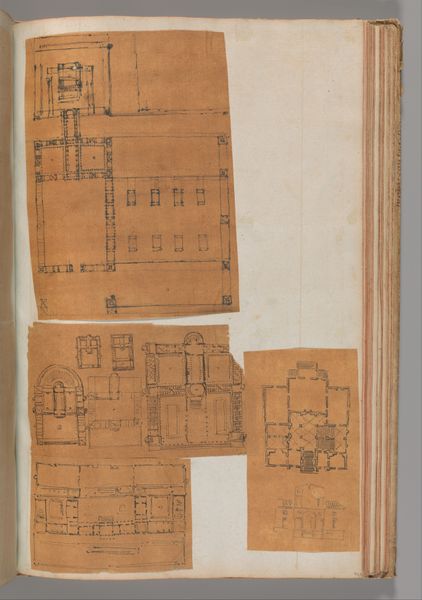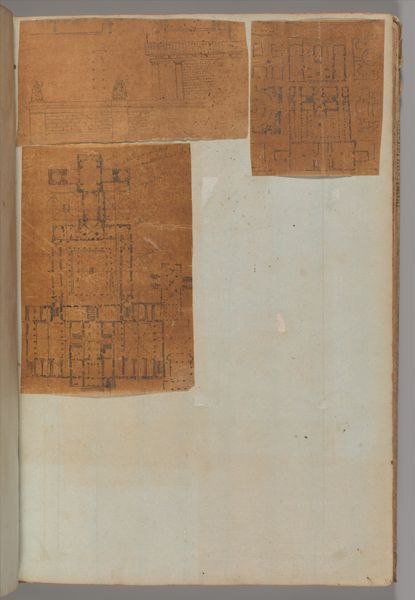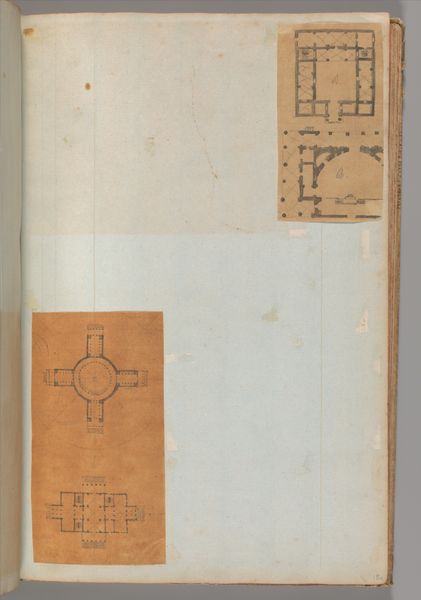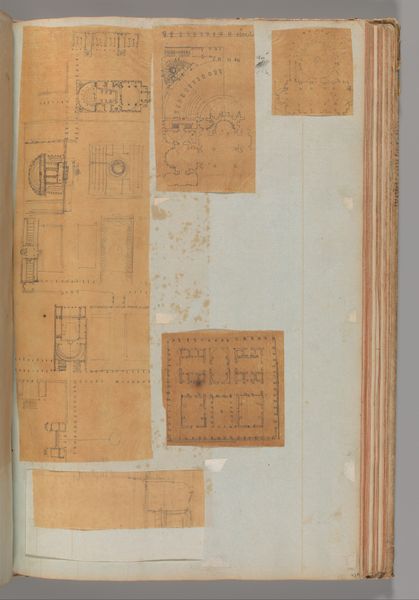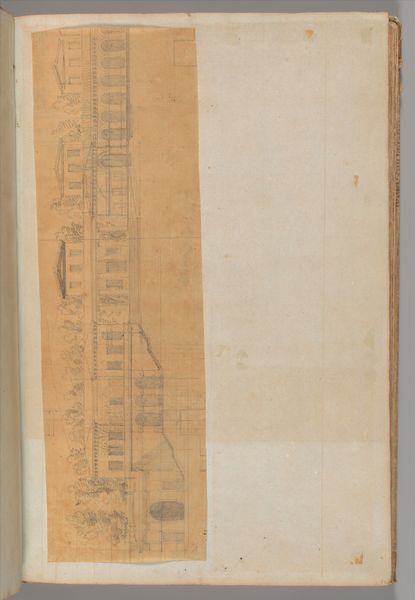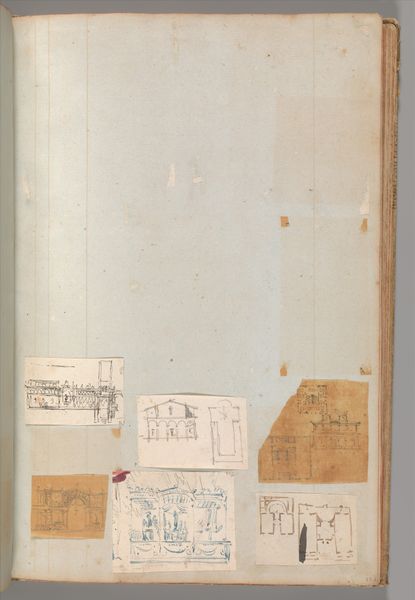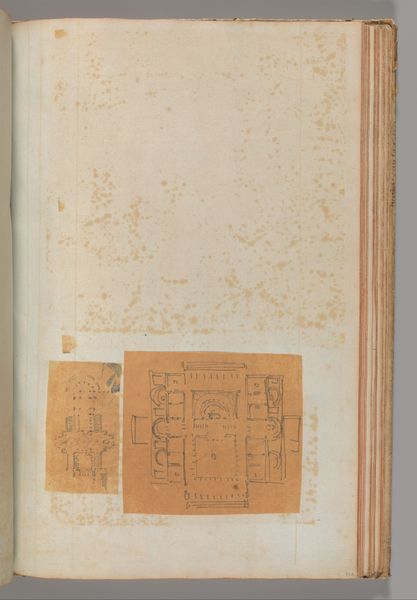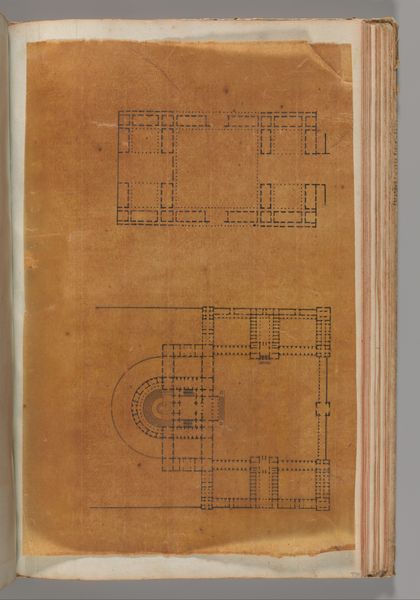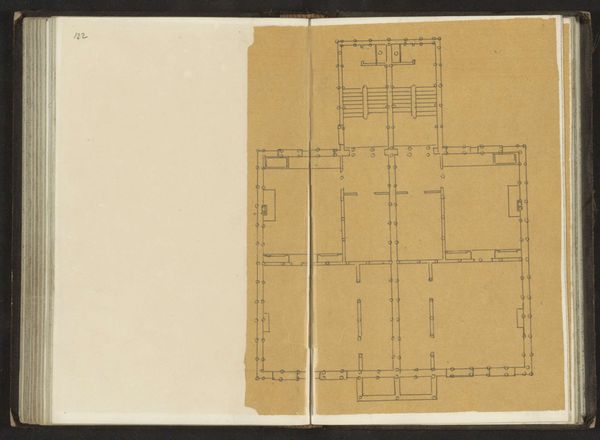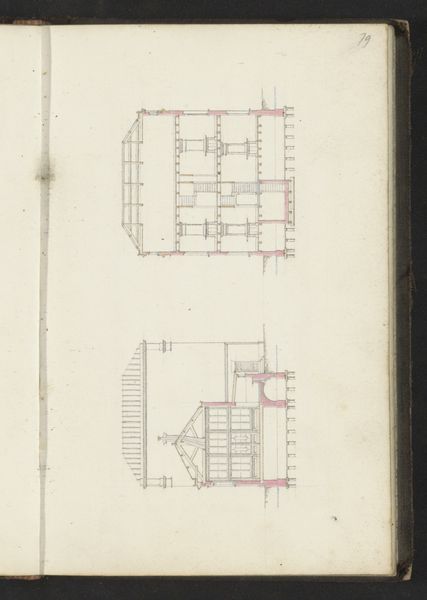
Page from a Scrapbook containing Drawings and Several Prints of Architecture, Interiors, Furniture and Other Objects 1795 - 1805
0:00
0:00
drawing, print, paper, pencil, architecture
#
drawing
#
neoclacissism
# print
#
paper
#
pencil
#
architecture
Dimensions: 15 11/16 x 10 in. (39.8 x 25.4 cm)
Copyright: Public Domain
Curator: This is a page from a scrapbook by Charles Percier, created sometime between 1795 and 1805. The scrapbook page features both drawings and prints of architecture, interiors, furniture, and other objects, and resides here at the Metropolitan Museum of Art. Editor: It's curious how flat and linear the architecture looks. I am immediately drawn to the monochromatic palette—a sepia-toned piece that’s aged, imparting a sense of faded grandeur and precise geometric forms against the stark emptiness of the scrapbook page, it almost appears collage-like. Curator: Percier was a leading figure in the Neoclassical movement. This aesthetic shift represented a longing for the perceived order and harmony of the ancient world during a period of considerable social and political change in France, not long after the Revolution. Notice the meticulous detail of architectural plans, pointing to Percier’s involvement in reshaping French design. Editor: The intricate rendering reveals a fascination with symmetry and proportion. This order reflects an intellectual rigor. We are compelled to analyze the relationships between different segments of space and structure. Each line seems deliberate. What is most appealing is that the composition is a series of separate works in different sizes and visual weights carefully pasted down. Curator: These images document, and to some extent, disseminate particular aesthetics of power and taste. Scrapbooks were an essential means of circulating visual ideas. Percier shaped not only grand monuments, but, importantly, public opinion around architecture. Editor: Consider, too, how this organization mimics a collage. Each image block contains within itself smaller arrangements of objects or spaces. Curator: So, by assembling different examples together, the page performs the active dialogue that characterized interior and exterior design at the turn of the 19th Century. It's no coincidence these interiors were popular as Napoleon attempted to legitimate his new empire through a highly curated, visually striking aesthetic program. Editor: Thank you. It is fascinating to examine design beyond mere construction or practicality, instead through the lens of formal balance, and, equally, socio-political forces that helped shaped a specific historical epoch.
Comments
No comments
Be the first to comment and join the conversation on the ultimate creative platform.
